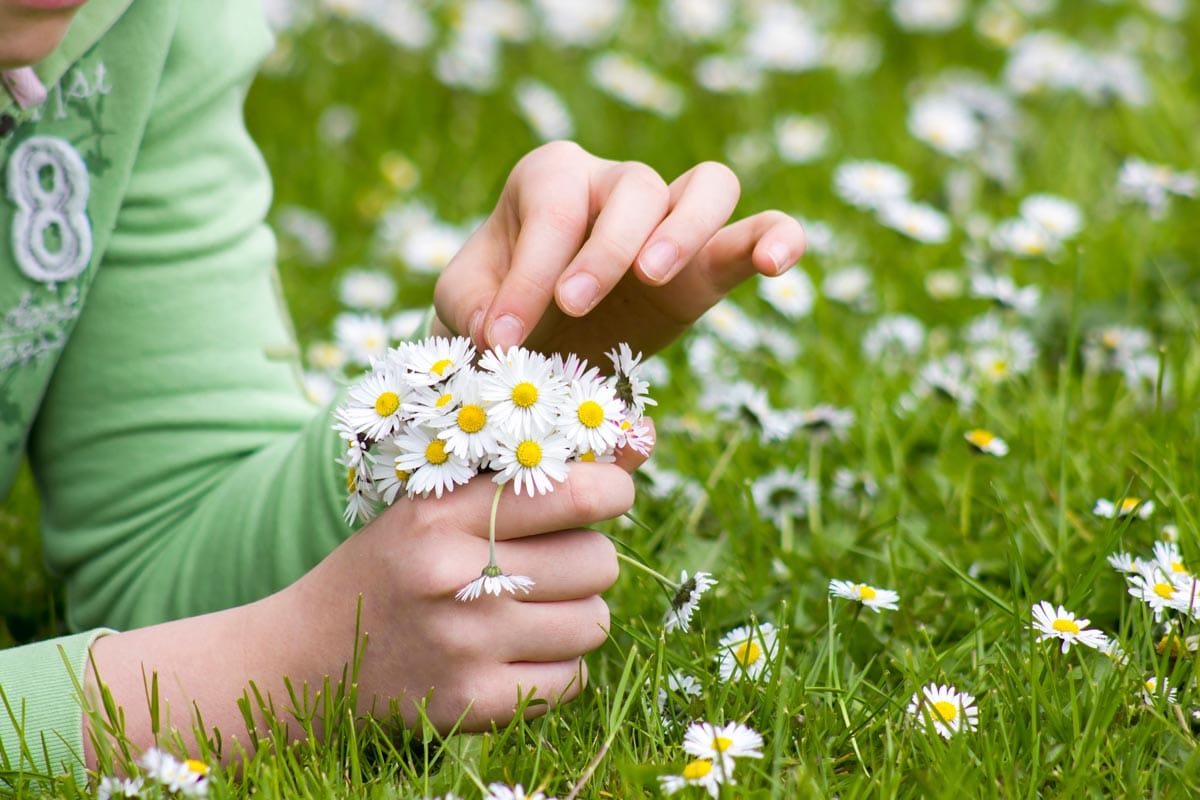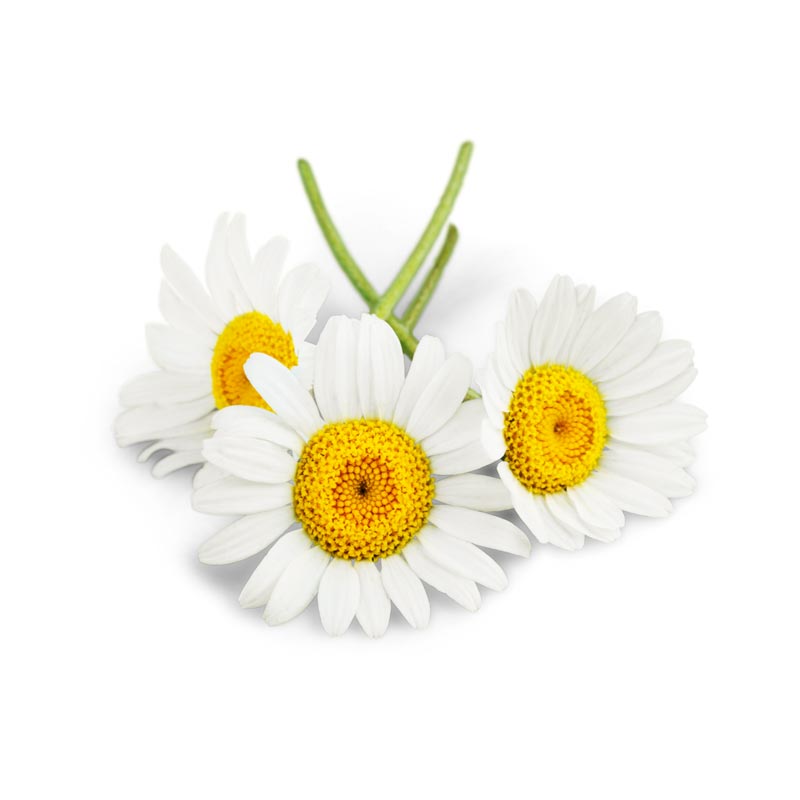Are daisies in your lawn a good thing or not? Robbie takes a close look at this common garden plant.
Do you have daisies in your lawn? And how do you feel about that? For some, the sight of a healthy lawn speckled with white flowers is pure delight. It takes us back to our younger years, when children made their own entertainment out of doors, and daisies featured in a range of activities. Making daisy chains, pressing flowers, trying not to step on the blooms or using patches of flowers as stepping stones..
For some lawn aficionado’s daisies are the enemy. They alter the appearance and texture of a lawn and can alter the ‘play’ on a bowling green. But before we moan about these little plants, let’s look at some of their redeeming qualities and maybe think about finding a compromise between gardeners and wild flowers.

More About The Humble Daisy
Daisies are members of the Asteracea plant family. Which means they are cousins to the sunflowers, michaelmas daisies, chamomile, cosmos, marigold, chrysanthemum and lots more. In fact the Asteracea family makes up around 10% of the entire world’s flowering plant population. For them to be so successful, they’re clearly very useful to Mother Nature. Daisies are great for humans too, our ancestors have been making the most of their medicinal properties for centuries and modern science is beginning to wake up to their numerous benefits too.
Daisies As Healing Plants
The common daisy, Bellis perennis is also known as bruisewort. Why? Because these little plants have been used for centuries to help heal bruises and also relieve the discomfort of rheumatism, and aching joints. In fact, some people even know it as ‘gardeners friend’ because it’s just the job for when you’re hurting after you’ve been bending or kneeling all day.
Here’s another interesting finding – when daisy extract is made into an ointment, it seems to speed the healing process after surgery and, better still, the wounds close without scarring. This link goes to quite a lengthy report, with lots of scientific jargon in it – but if you have time, please read it – it’ll open your mind to some of the benefits of those daisies in your lawn. (I’ll also post the link at the end of the blog)
Really early stages of other research suggests that daisy extract may also have some anti-tumour properties. That’s certainly one to watch…..
You can even pick daises and make them into a refreshing tea. I’ve not tried it so I can’t tell you what it tastes like. But why not give it a go? Please don’t use any parts of the plant that might have been treated with chemicals though. Yuk!
Now I’m sure, you’re not about to go and pick the daisies in your lawn to make bruise ointment. But they’re not just great for medical purposes. Daisies are a fabulous source of food for pollinators.
Daisies As Part Of The Ecosystem
Take a look at a daisy flower under a magnifying glass and you’ll see why they are so popular with pollinators. The white ‘petals’ make us think we are looking at one flower, but zoom in closer and you’ll see that the centre of the flower – the yellow part – is actually hundreds and hundreds of tiny flowers, known as disc florets. Each one of those florets is filled with protein rich pollen and energy giving nectar.

If you’re an observer of nature, you’ve probably noticed that the daisies in your lawn will happily flower from very early spring until late autumn. Which means that they are the pollinator’s equivalent of a supermarket – all of their favourite foods available whenever they need them. Even when other flowers are out of season.
Growing Daisies in Your Lawn
In my experience, if you want to grow daisies in your lawn, all you have to do is wait and eventually Mother Nature will provide. You can of course speed things up by transplanting daises from other parts of your garden into the lawn. If you don’t have any plants going spare, I’m sure that some of the lawn lovers in the Premier Lawns Facebook Community will be happy to donate some.
As a wildflower, common daisies are unusual in that they will tolerate nutrient rich soils. All they ask is a sunny spot with perhaps a little light shade. You may need to raise your mower blades to avoid scalping the plants or lopping off the flower heads but in general, you won’t need to drastically alter your lawn care regime to accommodate the daisies. It goes without saying that using herbicides is not a good idea if you want to preserve the plants.
Getting Rid Of Daisies In Your Lawn
If you realise how fantastic these little plants are but still don’t want them growing in your lawn, they’re easy enough to get rid of. Daisies are shallow rooted, you can easily grub them out with a trowel and reseed any bare patches they leave behind. This is a plant that actually likes compacted soil so by aerating and taking proper care of your lawn, you’ll create conditions that are unattractive for daisies.
More About Wildflowers In Your Lawn
6 things you need to know about the plantains in your lawn.
What to do with dandelions in your lawn.
Clover in lawns – should it stay or should it go?
More About The Healing Powers Of The Daisies In Your Lawn
Report of the effects of daisies on wound healing.
